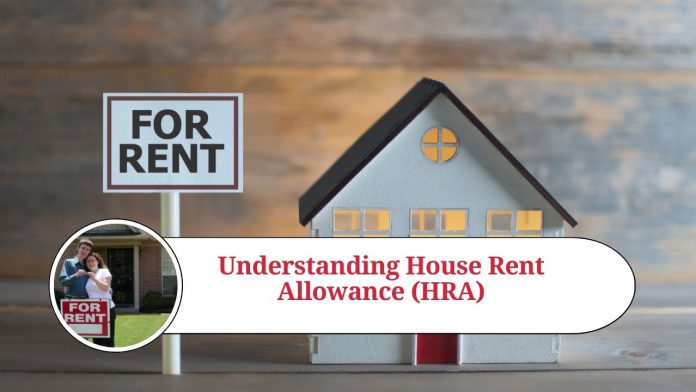The term “HRA” stands for Housing Rent Allowance, which is a significant component of an employee’s salary package. HRA is a type of allowance given to employees by their employers to cover their rental expenses if they live in rented accommodation. This blog post will discuss the various aspects of HRA, such as its meaning, how it is calculated, and how to claim it.
Meaning of HRA HRA is a component of an employee’s salary package that is given to cover their rental expenses. It is provided to employees who live in rented accommodation and is tax-free to a certain extent. However, the tax exemption on HRA depends on the employee’s salary, rent paid, and the city they live in. HRA can be a significant component of an employee’s salary, and it is essential to understand how it is calculated.
Calculation of HRA HRA is calculated based on the employee’s basic salary and the city they live in. The amount of HRA is generally 50% to 60% of the basic salary, depending on the city of residence. The following formula is used to calculate HRA:
HRA = Basic Salary * HRA% / 100
Where, HRA% = 50% of the basic salary for metro cities (Delhi, Mumbai, Kolkata, and Chennai) and HRA% = 40% of the basic salary for non-metro cities
Example: Suppose an employee’s basic salary is Rs. 50,000 and they live in Mumbai. In that case, their HRA will be calculated as follows:
HRA = Rs. 50,000 * 50% / 100 = Rs. 25,000
In this example, the employee’s HRA will be Rs. 25,000 per month.
Claiming HRA To claim HRA, an employee must submit the rent receipts to their employer. The rent receipts should include the name and address of the landlord, the rental period, and the rent paid. If the employee pays more than Rs. 1 lakh in rent annually, they must also provide the landlord’s PAN card details. The employer will then verify the rent receipts and calculate the employee’s HRA based on the formula mentioned earlier.
Tax Exemption on HRA The tax exemption on HRA is provided under Section 10(13A) of the Income Tax Act. The exemption is based on the lowest of the following three:
- Actual HRA received
- 50% of the basic salary for employees living in metro cities (40% for non-metro cities)
- Actual rent paid minus 10% of the basic salary
Importance of HRA HRA is an essential component of an employee’s salary package, particularly for those living in rented accommodation. It can help ease the financial burden of paying rent, which can be particularly high in urban areas. Additionally, HRA is tax-free up to a certain extent, which can significantly reduce an employee’s tax liability. Therefore, employers typically include HRA as part of their employees’ salary packages to attract and retain talent.
Tax Exemption on HRA As mentioned earlier, the tax exemption on HRA is based on the lowest of the following three:
- Actual HRA received: This is the amount of HRA received by the employee from their employer.
- 50% of the basic salary for employees living in metro cities (40% for non-metro cities): This is the maximum amount of HRA that can be tax-exempt. If the actual HRA received by the employee is less than this amount, the actual HRA received will be tax-exempt.
- Actual rent paid minus 10% of the basic salary: This is the actual amount of rent paid by the employee minus 10% of their basic salary. If the actual HRA received by the employee is less than this amount, the actual HRA received will be tax-exempt.
For example
Suppose an employee receives an HRA of Rs. 20,000 per month, pays rent of Rs. 15,000 per month, and their basic salary is Rs. 50,000 per month. In that case, the tax exemption on HRA will be calculated as follows:
- Actual HRA received = Rs. 20,000 per month.
- 50% of the basic salary = Rs. 25,000 per month.
- Actual rent paid minus 10% of basic salary = Rs. 13,000 per month (i.e., Rs. 15,000 – Rs. 5,000).
In this example, the lowest of the three amounts is Rs. 13,000 per month. Therefore, the tax exemption on HRA will be Rs. 13,000 per month, and the remaining Rs. 7,000 per month will be taxable.
HRA and Home Loan Employees who are paying EMI on a home loan for a house that they own can still claim HRA, provided they are living in a rented accommodation. However, the amount of tax exemption on HRA will be reduced by the amount of interest paid on the home loan in that financial year. This reduction is known as the “interest on housing loan deduction.”
For example, suppose an employee is paying an EMI of Rs. 30,000 per month towards a home loan and receiving an HRA of Rs. 20,000 per month. In that case, the tax exemption on HRA will be calculated as follows:
- Actual HRA received = Rs. 20,000 per month.
- 50% of the basic salary = Rs. 25,000 per month.
- Actual rent paid minus 10% of basic salary = Rs. 0 per month (i.e., Rs. 30,000 – Rs. 5,000).
However, since the employee is paying EMI towards a home loan, the tax exemption on HRA will be reduced by the amount of interest paid on the home loan in that financial year. Suppose the employee paid Rs. 3 lakh in interest on the home loan in that financial year. In that case, the tax exemption on HRA will be further reduced by Rs. 3 lakh divided by 12, i.e., Rs. 25,000 per month.
HRA Calculation The calculation of HRA is based on various factors, such as the employee’s basic salary, the city of residence, and the rent paid by the employee. The employer typically provides HRA as a percentage of the employee’s basic salary, which can range from 40% to 50%, depending on the city of residence.
For example, if an employee’s basic salary is Rs. 50,000 per month and the employer provides an HRA of 50% of the basic salary, then the HRA component of the employee’s salary will be Rs. 25,000 per month.
However, the actual tax exemption on HRA may differ from the amount received by the employee, as it depends on the lowest of the three factors mentioned earlier.
HRA Receipts and Proof To claim the tax exemption on HRA, employees must provide their employer with proof of rent paid, such as rent receipts or a rental agreement. It is essential to ensure that the rent receipts include the landlord’s name, the amount of rent paid, the period for which it was paid, and a revenue stamp.
In case the rent paid is more than Rs. 1 lakh per year, the landlord’s PAN card details are also required. The employer may ask for these documents at the time of filing tax returns to claim the tax exemption on HRA.
Impact on Employee’s Take-Home Salary As HRA is a tax-free component of an employee’s salary, it can have a significant impact on their take-home salary. The higher the amount of HRA received, the lower the employee’s tax liability. Therefore, it is essential for employees to ensure that they provide the necessary proof of rent paid to claim the tax exemption on HRA.
Additionally, some employers may structure the salary package to include a higher HRA component and a lower basic salary, which can help reduce the employee’s tax liability further.
In conclusion
HRA is an essential component of an employee’s salary package, particularly for those living in rented accommodation. It can help reduce the financial burden of paying rent and lower the employee’s tax liability. However, it is crucial to ensure that the necessary documents are provided to claim the tax exemption on HRA, and employees must understand the calculation of HRA to maximize its benefits.
Read more useful content:
- section 145 of income tax act
- section 10e of income tax act
- section 9 of the income tax act
- section 94b of income tax act
- section 206aa of income tax act
Frequently Asked Questions (FAQs)
Q. What is HRA?
HRA stands for House Rent Allowance, which is a component of an employee’s salary package paid by the employer to compensate for the rent paid by the employee for their accommodation.
Q. Who is eligible for HRA?
Employees who are living in rented accommodation and receive a salary package from their employer are eligible for HRA.
Q. How is HRA calculated?
HRA is calculated as a percentage of the employee’s basic salary, which can vary from 40% to 50%, depending on the city of residence.
Q. Can an employee receive HRA and claim rent as a deduction while filing tax returns?
Yes, an employee can receive HRA from their employer and also claim rent as a deduction while filing tax returns. However, the amount of deduction claimed must be less than the HRA received by the employee.
Q. Is there a limit to the amount of HRA that can be claimed as a tax exemption?
Yes, the tax exemption on HRA is limited to the lowest of the following three factors: the actual amount of HRA received by the employee, 50% of the employee’s basic salary (if living in a metro city), or actual rent paid minus 10% of the basic salary.
Q. What documents are required to claim the tax exemption on the HRA?
Employees must provide their employer with proof of rent paid, such as rent receipts or a rental agreement. Rent receipts must include the landlord’s name, the amount of rent paid, the period for which it was paid, and a revenue stamp. If the rent paid is more than Rs. 1 lakh per year, the landlord’s PAN card details are also required.
Q. Can an employee claim HRA if they own a house or live with family?
No, an employee cannot claim HRA if they own a house or live with family. HRA can only be claimed if the employee is living in rented accommodation.
Q. Can an employer choose not to provide HRA to its employees?
Yes, an employer can choose not to provide HRA to its employees. However, HRA is a common component of most salary packages, and not providing it may make it difficult for employers to attract and retain talent.




















